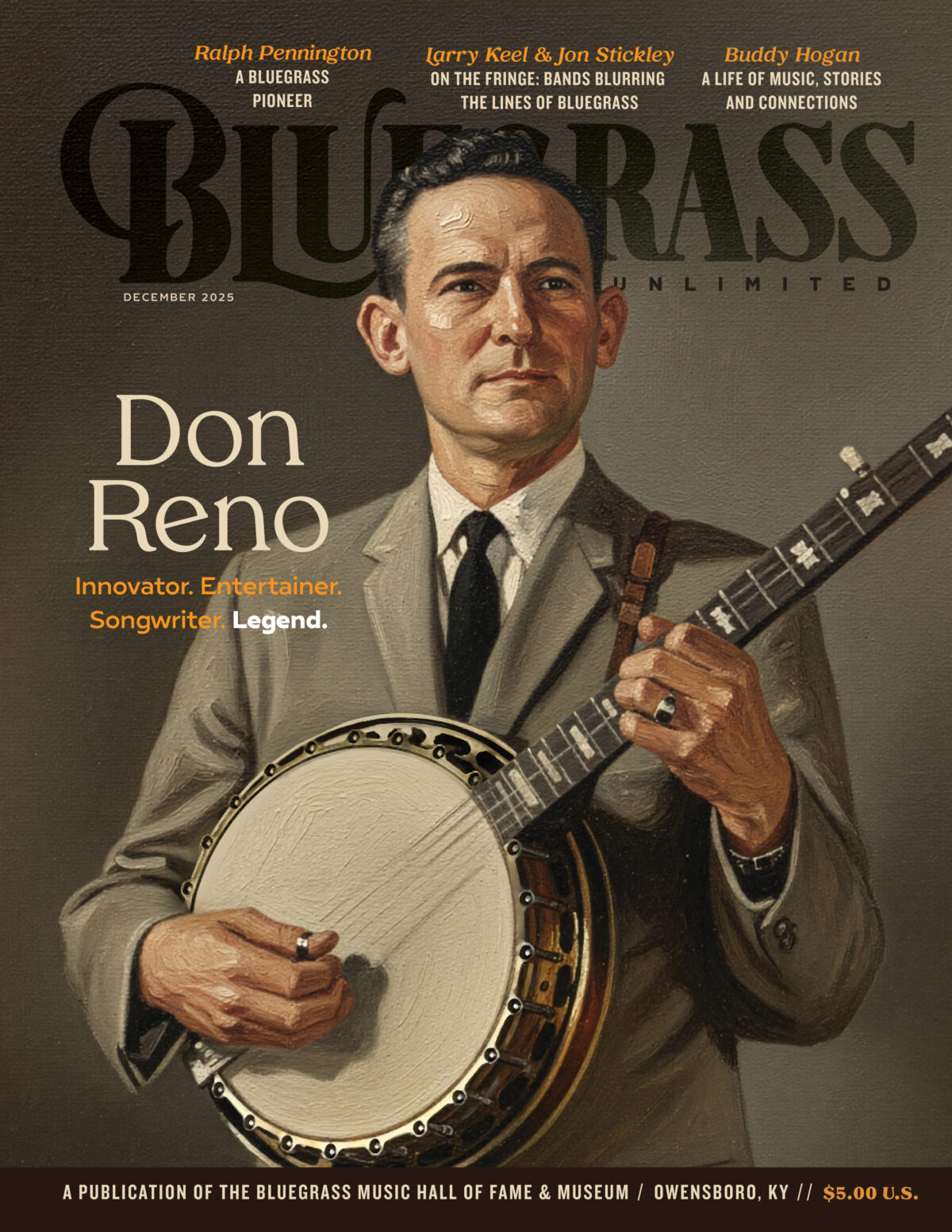ZEN BANJO: METHOD & MINDFULNESS—BY STEVE BAUGHMAN & REV. HENG SURE
ZEN BANJO: METHOD & MINDFULNESS—BY STEVE BAUGHMAN & REV. HENG SURE
No Label
No Number
(Steve Baughman, 111 Pine St., San Francisco, CA 94111, www.zenbanjo.com.)
That one might equate mindfulness and intentional living qualities of Zen Buddhism to banjo is nothing new. There is already a book out there comparing banjo playing with Taoist spirituality so why not Zen, too? Anyone who sets out to learn clawhammer banjo without intention will fail at banjo. One who seeks the banjo fully will gain in mindful intention along the way. Learning banjo is a journey, not a destination. With that thought in mind, we can evaluate this project.
There are seven chapters presented, each taking the student further down the path. Cast in a quasi-spiritual jargon, the DVD starts out with the sound of one hand clawing. This is a description of the “bum-ditty” or the basic rhythm of the right hand. Baughman has his own way of counting based on a four-beat paradigm. It is actually a two-beat phrase with one quarter-note followed by two eight-notes. But he counts it 1-rest-3-4. Which does not truly reflect the time signature used in this rhythmic figure, but might work for some students not grounded in any music theory.
The material presented here covers a great deal of right- and left-hand techniques utilizing the notion that playing with the banjo will teach many of the techniques used in banjo playing. Since playing the banjo may enable you to make tens of dollars, you might as well “play” with it. Improvisation is emphasized via a floating melody and a “Trance Tune.” There is a whole body of modern old-time music that is referred to as “trance tunes,” made up of repetitious five-note tunes that flow along with subtle variations. This trance tune improvisation is used to teach basic left-hand techniques. A tuning for the banjo is specified and color adhesive dots are provided so you can locate the notes to use in the development of your own improvisation. Unfortunately, those dots did not come with the review copy of the DVD.
The next chapter goes into more advanced right-hand maneuvers like drop thumb and a term unique to this project called “cross claw.” In chapter three, several basic tunes like “Cripple Creek” and “Old Joe Clark” are taught, and a simple song made up by Baughman when he was in school is taught to demonstrate singing with banjo. Each subsequent chapter details ways to alter your rhythm and to add interest to your arrangements. Here, lick names crop up that are location specific, but many established players would be surprised to hear that there is a “Frisco Flick” and “California Roll” (isn’t that sushi?). We are entreated to the concept of a single-string bum-ditty. The Galax lick is referred to as the “Galax Riff” here. The idea that blues can be played on a banjo and played in 7/8 time are presented as well. String dampening is discussed as a way to change the right-hand timing. The last chapter covers a whole group of tunes presented in a tuning quite popular with many banjo players fDGCD.
Interspersed with the banjo information are short exercises about mindfulness presented by Rev. Heng Sure, a Buddhist priest. Baughman is a very good player and demonstrates his techniques in a clear manner. This could be just the ticket for someone getting into clawhammer banjo, but has no clue where to find a teacher. While there is some new branding of lick names here, the ideas are for the most part quite good and widely used. Being a mindful student is essential with banjo or life. RCB
